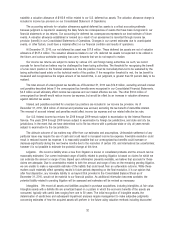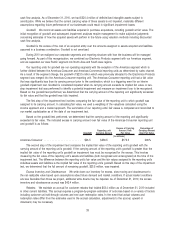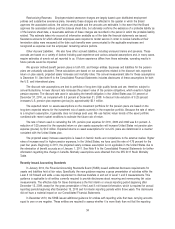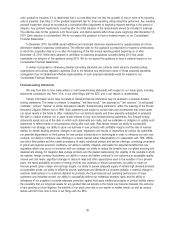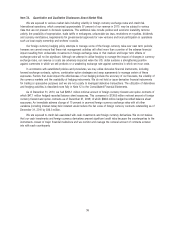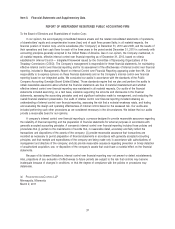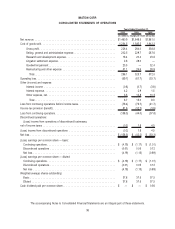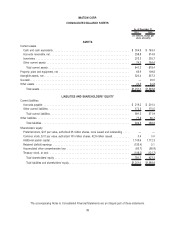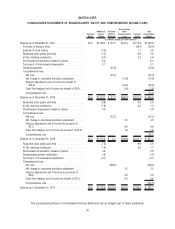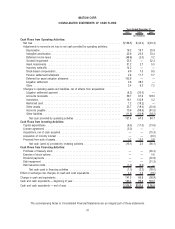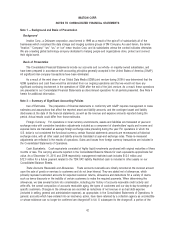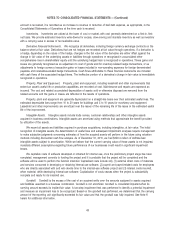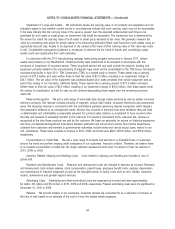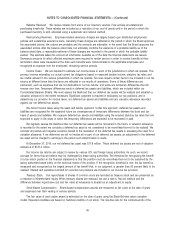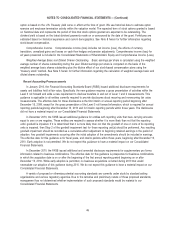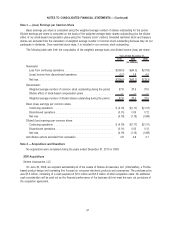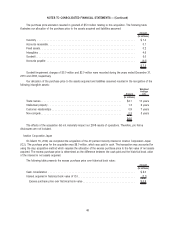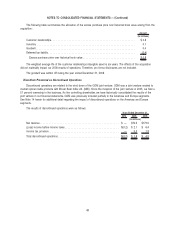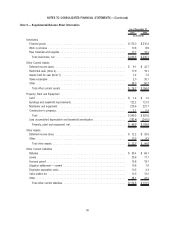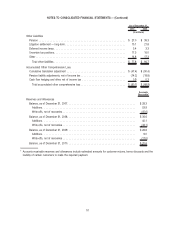Memorex 2010 Annual Report Download - page 45
Download and view the complete annual report
Please find page 45 of the 2010 Memorex annual report below. You can navigate through the pages in the report by either clicking on the pages listed below, or by using the keyword search tool below to find specific information within the annual report.IMATION CORP.
NOTES TO CONSOLIDATED FINANCIAL STATEMENTS
Note 1 — Background and Basis of Presentation
Background
Imation Corp., a Delaware corporation, was formed in 1996 as a result of the spin-off of substantially all of the
businesses which comprised the data storage and imaging systems groups of 3M Company. As used herein, the terms
“Imation,” “Company,” ‘‘we,” “us,” or “our” mean Imation Corp. and its subsidiaries unless the context indicates otherwise.
We are a leading global technology company dedicated to helping people and organizations store, protect and connect
their digital world.
Basis of Presentation
The Consolidated Financial Statements include our accounts and our wholly- or majority-owned subsidiaries, and
have been prepared in accordance with accounting principles generally accepted in the United States of America (GAAP).
All significant inter-company transactions have been eliminated.
As a result of the wind down of our Global Data Media (GDM) joint venture during 2009 it was determined that the
GDM operations and cash flows would be eliminated from our ongoing operations and that we would not have any
significant continuing involvement in the operations of GDM after the exit of the joint venture. As a result, these operations
are presented in our Consolidated Financial Statements as discontinued operations for all periods presented. See Note 4
herein for additional information.
Note 2 — Summary of Significant Accounting Policies
Use of Estimates. The preparation of financial statements in conformity with GAAP requires management to make
estimates and assumptions that affect the reported asset and liability amounts, and the contingent asset and liability
disclosures at the date of the financial statements, as well as the revenue and expense amounts reported during the
period. Actual results could differ from those estimates.
Foreign Currency. For operations in local currency environments, assets and liabilities are translated at year-end
exchange rates with cumulative translation adjustments included as a component of shareholders’ equity and income and
expense items are translated at average foreign exchange rates prevailing during the year. For operations in which the
U.S. dollar is not considered the functional currency, certain financial statements amounts are re-measured at historical
exchange rates, with all other asset and liability amounts translated at year-end exchange rates. These re-measured
adjustments are reflected in the results of operations. Gains and losses from foreign currency transactions are included in
the Consolidated Statements of Operations.
Cash Equivalents. Cash equivalents consisted of highly liquid investments purchased with original maturities of three
months or less. The carrying amounts reported in the Consolidated Balance Sheets for cash equivalents approximate fair
value. As of December 31, 2010 and 2009 respectively, management restricted cash includes $12.0 million and
$12.0 million for a future payment related to the TDK VAT liability. Restricted cash is included in other assets on our
Consolidated Balance Sheets.
Trade Accounts Receivable and Allowances. Trade accounts receivable are initially recorded at the invoiced amount
upon the sale of goods or services to customers and do not bear interest. They are stated net of allowances, which
primarily represent estimated amounts for expected customer returns, allowances and deductions for a variety of claims
such as terms discounts or the inability of certain customers to make the required payments. When determining the
allowances, we take several factors into consideration, including prior history of accounts receivable credit activity and
write-offs, the overall composition of accounts receivable aging, the types of customers and our day-to-day knowledge of
specific customers. Changes in the allowances are recorded as reductions of net revenue or as bad debt expense
(included in selling, general and administrative expense), as appropriate, in the Consolidated Statements of Operations. In
general, accounts which have entered into an insolvency action, have been returned by a collection agency as uncollectible
or whose existence can no longer be confirmed are charged-off in full. If, subsequent to the charge-off, a portion of the
42


